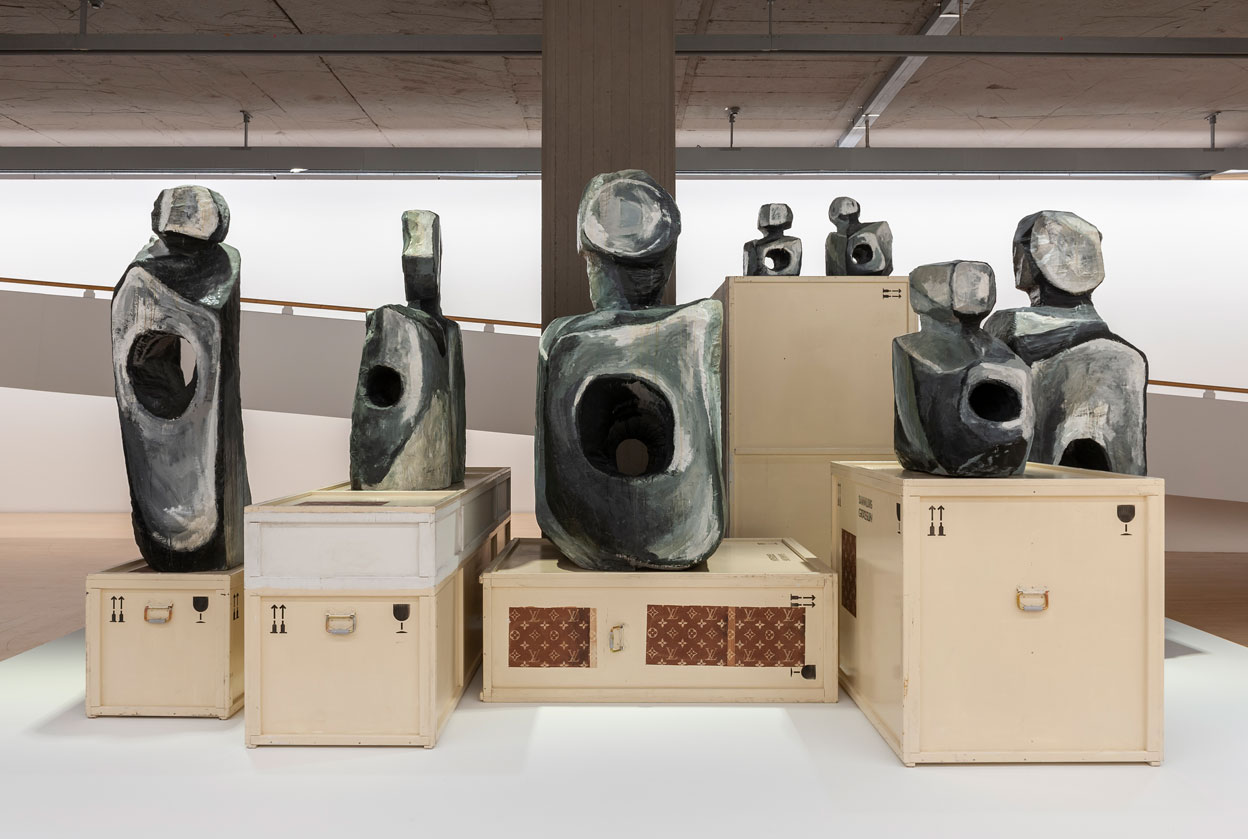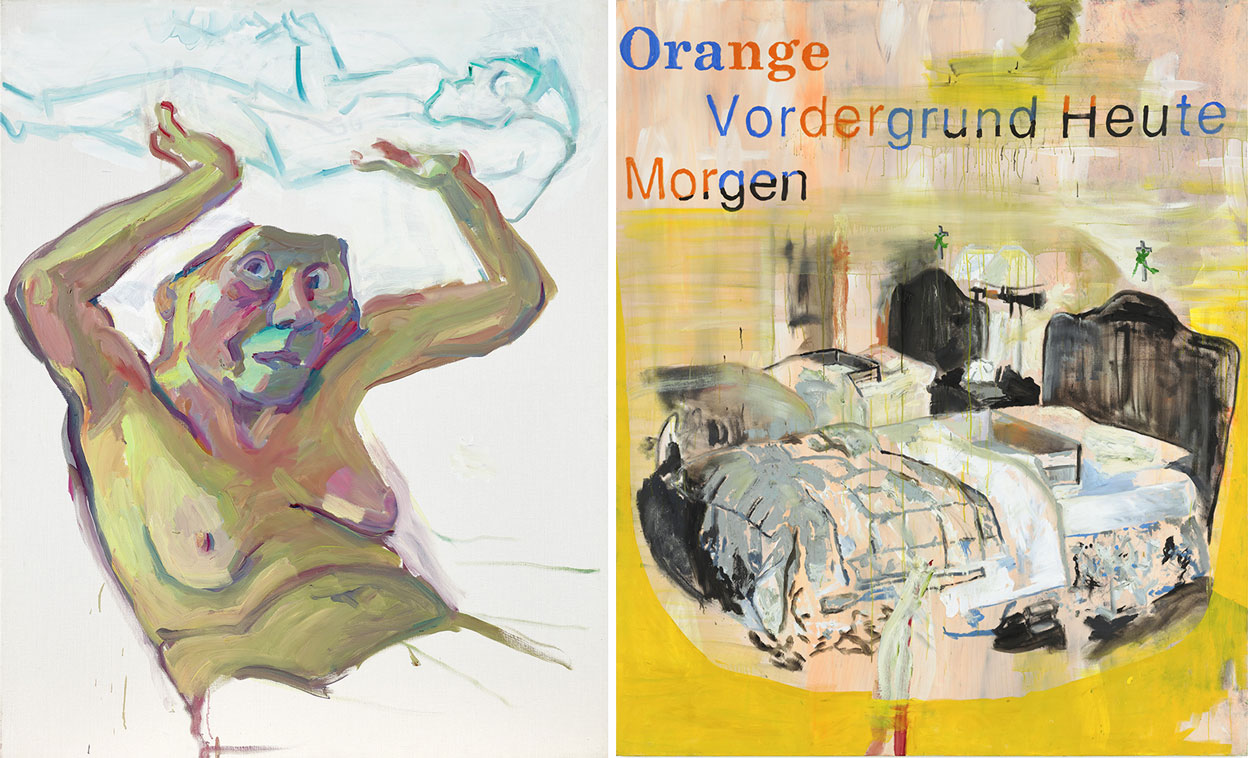ART-PRESENTATION: Body Check-Martin Kippenberger & Maria Lassnig
 Martin Kippenberger and Maria Lassnig undertake a searching painterly examination of their own physical existence. The frail and fragmented body serves them as a metaphor for social and psychological conflict. Pain and suffering, absurdity and humor are inextricably interwoven in these studies of the flesh. The exhibition “BODY CHECK. Martin Kippenberger – Maria Lassnig” ventures an unexpected encounter: it is the first to confront the works of these two influential protagonists of 20th Century painting with each other.
Martin Kippenberger and Maria Lassnig undertake a searching painterly examination of their own physical existence. The frail and fragmented body serves them as a metaphor for social and psychological conflict. Pain and suffering, absurdity and humor are inextricably interwoven in these studies of the flesh. The exhibition “BODY CHECK. Martin Kippenberger – Maria Lassnig” ventures an unexpected encounter: it is the first to confront the works of these two influential protagonists of 20th Century painting with each other.
By Efi Michalarou
Photo: Kunstbau, Lenbachhaus Museum Archive
Maria Lassnig and Martin Kippenberger sought to cast the maladies of human life into artistic form by dramatizing the female and male bodies. Their theatrical creations are selfportraits in the classical sense, but without the air of heroism which is a hallmark of the genre. Both reveal their disfigurements and the ravages of illness in depictions that are alternately mocking and selfpitying—but never fall for the trope of the eminent artist and his traditional attitudes. The results are touching selfexplorations; in Lassnig’s works, they take on an aspect of obsession and introversion as she wrestles with the theme of the artist’s role, framing what we can recognize today as a feminist perspective. Kippenberger’s paintings, sculptures, and drawings signal a sense of humor that complements Lassnig’s wit with a note of inscrutable grotesquerie. The exhibition is arranged to initiate intimate conversations between more than sixty selected works on loan from international collections that are rarely on public display. A dialogue commences that reveals intersections and shared concerns as well as differences between the artist’s approaches to the theme of the body. In Martin Kippenberger’s work, depictions of the body are inseparable from the Iartist’s conception of himself in relation to his work. His depictions of the human body were the ultimate Kippenbergers, bearing a synecdochical relationship not only to his body of work, but to his life itself, and the role of the artist as producer. However, his self-portraits also manifest the internal contradictions that characterized much of his work: they both inflate his persona and deflate it at the same time. While signifying the manic self-obsession that drove his prolific production, they also undermine it by displaying the body’s weakness, failure and vulnerability. The work of Maria Lassnig has its springboard in her concentration on her own body. Introspectively, she listens closely to her body, picks up on its reactions to its surroundings, and is aware of the inevitable integration of her own mental constitution, which becomes one with the body. She already settled on her central theme in the 1940s. Ever since then, she was engaged in tirelessly exploring various ways to transfer her own bodily sensations onto canvas and paper. Lassnig changed her style several times in the process, but never her theme. Although it must be mentioned that not all of her works can be considered “body consciousness painting” in the strict sense. She constantly deployed new methods, painting informally, realistically, dramatically, and nearly abstractly to come closer to reaching her goal, which—as she her-self cautioned us to bear in mind—was not really feasible, because bodily awareness is not itself an image but must first be translated into one. And yet, Lassnig painted and drew relentlessly. Three days before her death in May 2014, she was still putting pen to paper.
Info: Curators: Veit Loers, Elisabeth Giers and Matthias Mühling, Kunstbau, Lenbachhaus Museum, Luisenstraße 33, Munich, Duration: 20/5-15/9/19, Days & Hours: Tue: 10:00-20:00, Wed-Sun 10:00-18:00, www.lenbachhaus.de





